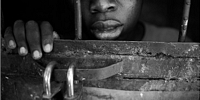|
|
 Acne (1,500) Acne (1,500)
 Addictions (1,500) Addictions (1,500)
 Advice (1,500) Advice (1,500)
 Allergies (1,092) Allergies (1,092)
 Alternative Medicine (1,500) Alternative Medicine (1,500)
 Anti Aging (1,500) Anti Aging (1,500)
 Breakup (1,500) Breakup (1,500)
 Cancer (1,499) Cancer (1,499)
 Dental Care (1,500) Dental Care (1,500)
 Disabilities (1,500) Disabilities (1,500)
 Divorce (1,500) Divorce (1,500)
 Elderly Care (1,498) Elderly Care (1,498)
 Goal Setting (1,500) Goal Setting (1,500)
 Hair Loss (1,500) Hair Loss (1,500)
 Health and Safety (1,497) Health and Safety (1,497)
 Hearing (1,500) Hearing (1,500)
 Law of Attraction (1,499) Law of Attraction (1,499)
 Marriage (1,500) Marriage (1,500)
 Medicine (1,497) Medicine (1,497)
 Meditation (1,499) Meditation (1,499)
 Men's Health (1,500) Men's Health (1,500)
 Mental Health (1,500) Mental Health (1,500)
 Motivational (1,500) Motivational (1,500)
 Nutrition (1,495) Nutrition (1,495)
 Personal Injury (1,499) Personal Injury (1,499)
 Plastic Surgeries (1,500) Plastic Surgeries (1,500)
 Pregnancy (1,496) Pregnancy (1,496)
 Psychology (1,500) Psychology (1,500)
 Public Speaking (1,500) Public Speaking (1,500)
 Quit Smoking (1,500) Quit Smoking (1,500)
 Religion (1,499) Religion (1,499)
 Self Help (1,500) Self Help (1,500)
 Skin Care (1,500) Skin Care (1,500)
 Sleep (1,500) Sleep (1,500)
 Stress Management (1,500) Stress Management (1,500)
 Teenagers (1,492) Teenagers (1,492)
 Time Management (1,500) Time Management (1,500)
 Weddings (1,500) Weddings (1,500)
 Wellness (1,500) Wellness (1,500)
 Women's Health (1,500) Women's Health (1,500)
 Women's Issues (1,500) Women's Issues (1,500)
|
Screening for esophageal cancer is normally done prior to experiencing any sort of symptoms so that it helps in finding the presence of cancer during its early stages. The main objective is to find out cancer when it is in the beginning stages and to make the treatment easy and effective for the patients. Doctors are the right people to determine who needs screening and the frequency of screening.
Some of the screening tests for esophageal cancer that are under study are esophagoscopy, brush cytology, biopsy, balloon cytology, fluorescence spectroscopy and chromoendoscopy. Esophagoscopy is a type of screening test which takes a look of the esophagus's interiors for checking for areas that are abnormal. A tool called as esophagoscope is normally inserted via nose or mouth till the throat and inside the esophagus. It is a tube like thin instrument consisting of a lens and light for seeing properly. Sometimes esophagoscopy with a tool for removing tissue samples might also be used so that the removed tissues can be checked using microscope for the presence of cancer.
Biopsy is a type of screening test for esophageal cancer which involves in removing the tissues or cells which can be looked by pathologists under the microscope for check cancer signs. Biopsy samples from various parts of the esophageal lining are taken. When patients are suspected to have barrett's esophagus, a sample of esophagus's lower part is removed and checked. Brush cytology brushes the cells from the esophagus's lining for viewing which might or might not be done when performing esophagoscopy.
The cells from the esophageal lining sometimes are collected with the help of a deflated balloon which is swallowed by patients. After inflating the balloon, it is brought out of esophagus and the cells obtained through the procedure are checked for abnormality. Chromoendoscopy involves a procedure where a colored dye is sprayed over the esophageal lining when performing esophagoscopy.
If certain areas of esophageal lining are stained more, then it is taken as a sign of barrett's esophagus in its early stages. Fluroscence spectroscopy is also an effective screening test for esophageal cancer which makes use of special light for looking at the esophageal lining tissues. Endoscope is used for inserting the light probe which illuminates the esophageal lining. The light emitted by esophageal cell lining is measured. Normal tissues emit more light than malignant tissues that they are found out.
Natural Remedies:
There are certain natural remedies that offer a promising cure for esophageal cancer. Along with the natural remedies and a well-researched different diet pattern, a few simple adjustments to your lifestyle can make a huge difference to your efforts for prolonging the life for several years. You can increase your chances of surviving esophagus cancer now by trying these proven natural remedies discussed here
|
|
|



